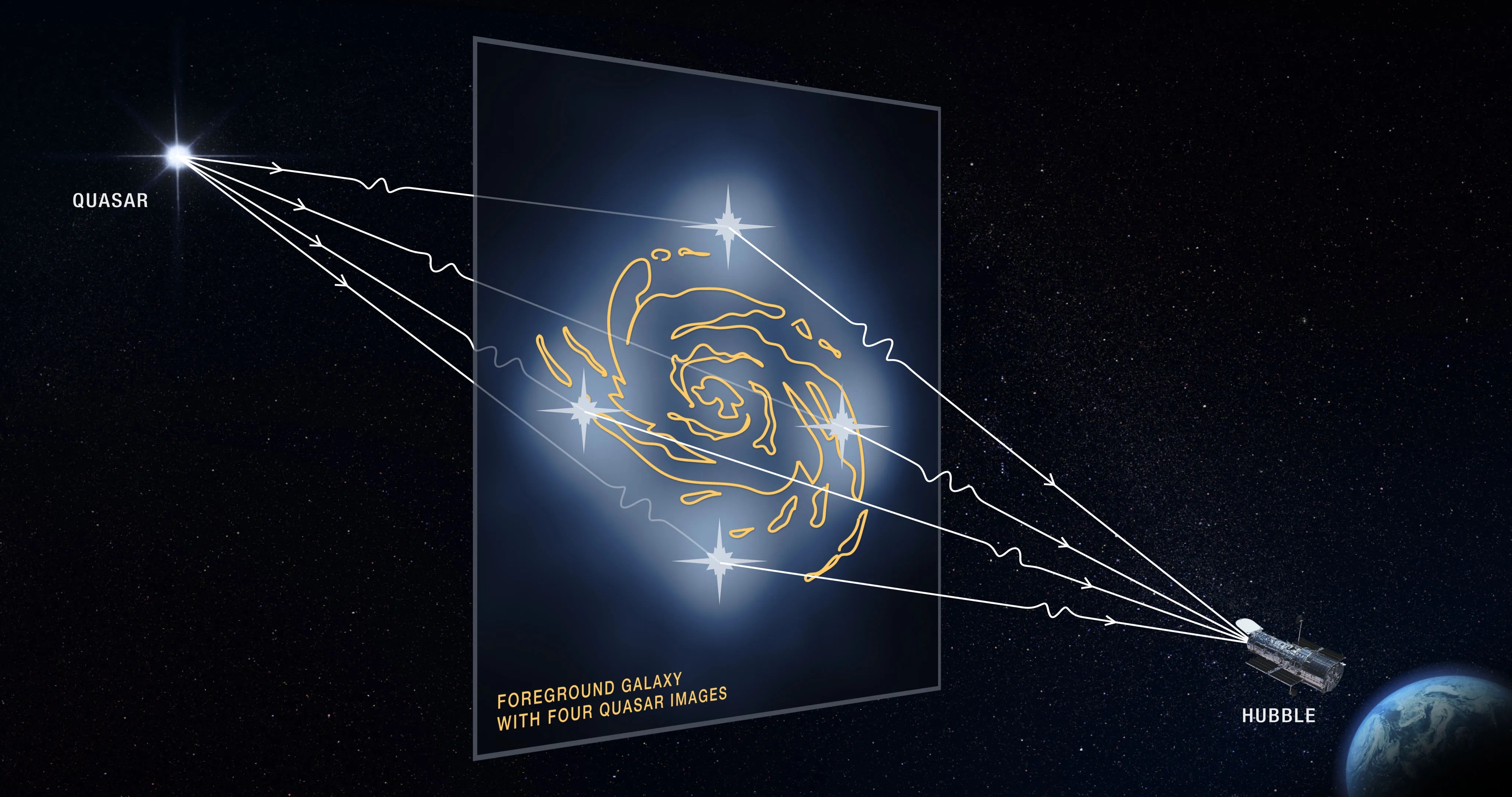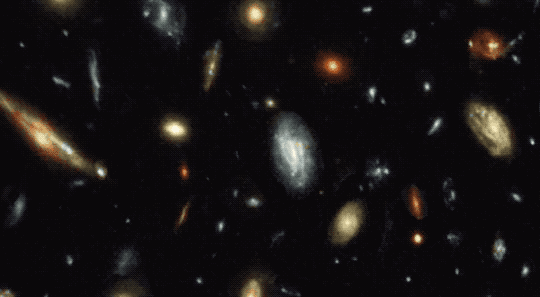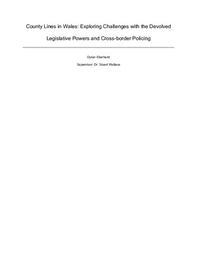Background
Not everything in this Universe is visible to us. The universe is overwhelmingly vast, containing billions of galaxies, stars, planets, and other objects that emit or reflect light. However, all this amounts to only 15 percent of all mass that actually exists.
The rest is hidden and can’t be “seen”, hence coined dark matter.
We know of the existence of this mysterious, invisible substance through its gravitational effects, and given its abundance, it is necessary to study this so-called dark matter to better understand the world around us.
But how do we study something we cannot see?
Traditional lenses and telescopes cannot help in this case, but there is a natural lens in space, made of gravity, that can help detect the gravity of dark matter.
According to Einstein’s theory of relativity, mass bends space-time, and light follows these curves. When light from distant galaxies passes by a massive object like a galaxy cluster, its path bends. Just like when we look at objects through lenses and mirrors that bend light, these background galaxies appear distorted. This effect is called gravitational lensing.

There are two regimes: in strong lensing, the distortions are dramatic, creating arcs and even multiple images of the same galaxy. In weak lensing, individual galaxies just look a little stretched or skewed, which is the regime we use in this study. By combining many background galaxies in weak lensing, a statistical pattern emerges.
That pattern allows us to map the distribution of dark matter, even though it’s invisible.
Why should we map dark matter?
These maps reveal how dark matter is distributed, and ultimately give us clues about what dark matter actually is. Each improvement in our methods gets us one step closer to understanding a mystery that exists in the entire universe.
The Project
One of the best places to study dark matter is in galaxy clusters: huge structures made up of hundreds or even thousands of galaxies, all bound together by gravity and packed with dark matter. Because they’re so massive, they bend light strongly, which makes the lensing effects easier to see.
To create a map of the hidden mass, we look at galaxies behind a cluster and measure how their shapes have been stretched by the cluster’s gravity. On average, these background galaxies should look round, but near a cluster, they appear slightly squashed or skewed. By measuring this tiny stretch (what we call ellipticity or shear), we can reconstruct where the invisible mass is. It’s like tracing the ripples on a pond to figure out where the stone was dropped.
This is where my work comes in. Weak lensing depends on having a clean sample of background galaxies: ones that are bright and large enough to measure shapes reliably, and not confused with stars or with galaxies inside the cluster itself. The process is now mostly done manually, sometimes even by eye, which is a slow and subjective process. My project is about automating this step.
As a test case, I’m working with Hubble images of the Bullet Cluster, a famous pair of colliding clusters that has given some of the clearest evidence for dark matter. The algorithm filters out some galaxies based on parameters such as their size and brightness. It then aims to find the best parameter cuts that lead to the cleanest map.

The end goal of this program is simple: to maximize the accuracy of the dark matter map.
Why does this matter?
The next generation of surveys, like ESA’s Euclid mission, will provide weak lensing data for tens of thousands of galaxy clusters. Doing the selection by hand is going to be time-consuming, non-uniform, and nearly impossible. Automating it ensures that we can process huge amounts of data quickly, consistently, and more accurately.
References






Please sign in
If you are a registered user on Laidlaw Scholars Network, please sign in
Amazing article Avin, great work ! It truly is fascinating, and you explain it really well. Looking forward to learning more about it !